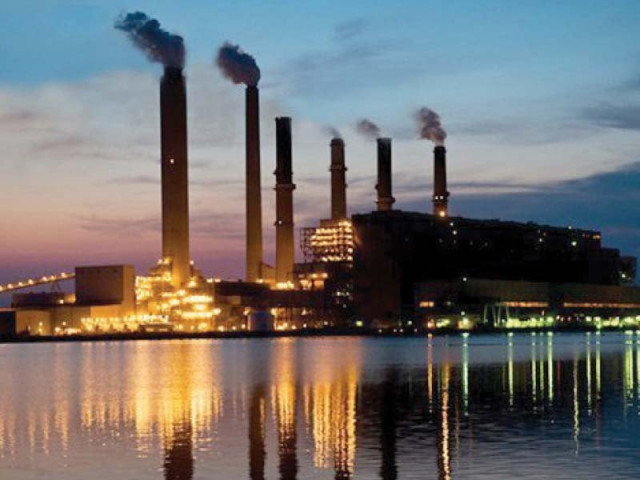Comparative electrical scene in South Asia
Pakistan’s maximum power tariff 40% higher than Indian average

Worldwide the energy scene is bad; there are both supply and high price issues.
Poor countries’ hardship is obviously more. Governments do not have foreign exchange and money to subsidise while people cannot pay the high prices.
Many people in Pakistan are wondering as to what is the situation in the region in terms of energy supplies and prices. We will try to provide a rough comparative sketch of the energy scene in South Asia involving Pakistan, India and Bangladesh. India is comparatively rich in terms of energy resources – coal, hydro and solar. These three resources based electricity is the cheapest in India where coal produces 204,080 megawatts, hydro 46,850MW and renewables 11,065MW, totalling 399,496MW.
It has been mostly self-sufficient in these resources. However, lately there are local coal supply issues as compared to demand and it has to import coal from abroad. Imported coal is being mixed with local coal with a cost penalty of 30% in the cost of generation.
India imports gas in the form of liquefied natural gas (LNG), which is expensive these days, however, there is hardly any electricity generation based on gas.
Inefficiency and transmission and distribution (T&D) losses in India are comparable with Pakistan or even more, which affects cost of supplies. There are huge DISCOM losses, which have accumulated almost comparable with Pakistan. In Pakistan, these losses show up in the form of a unique term called circular debt.
By 2014, in Indian rural areas, load-shedding used to be of 10-12 hours. Average power shortage was 17-20%.These days there is power surplus with an installed capacity of 400 gigawatts (with a renewable share of 158GW) against demand for 210 GW.
There shouldn’t be any load-shedding in India due to both enough supply and having local fuel. However, in April, peak demand in India was 207.1GW and the supply was short by 10GW, which means about 5% load-shedding or 1.25 hours of average load-shedding per day.
Average AT&C losses in India are 22%. There is a large variation in this among states – least loss states are Delhi, Kerala and Punjab, where losses are around 10%. Bihar has 30% losses, UP 33% and occupied Kashmir 50%.
Bangladesh and Pakistan seem to have an identical syndrome – high installed capacity and low fuel availability due to higher prices. It had to approach the IMF as well due to the current account deficit created by heavy and expensive energy imports.
Installed electricity capacity in Bangladesh is 25,566MW against peak demand for 14,782MW. Some 7.89% of electricity is generated from coal, 50.84% from gas including LNG, 28% from furnace oil and 6% from diesel.
T&D losses in Bangladesh DISCOs have been reduced to 10-12% (from 36.19% in 1988 and 15.42% in 1998), as opposed to 17% in Pakistan. Perhaps, poverty reduction accompanied by the highest per capita income and growth in the region has played a role in the T&D loss reduction. In Bangladesh, load-shedding is much lesser than in Pakistan. Dhaka Electricity Board has announced load-shedding twice a day for two hours each.
Various electricity conservation measures have been enforced. It has almost the same problems as in Pakistan. Excess capacity and high capacity charges, dependence on expensive imported gas and furnace oil.
Tariff variances
Although averages may be deceptive, the Indian average tariff for large customers is Pakistani Rs23.38 per kWh and for small consumers the average is Pakistani Rs10.70 per kWh.
It appears comparable with Bangladesh’s corresponding figures – maximum Pak Rs25.33 per kWh and minimum Pak Rs12.64 per kWh. Pakistan’s maximum tariff is 40% higher than the Indian average.
Median/ typical maximum tariff for residential consumers in India is Pak Rs25 per kWh, which is in Mumbai, Andhra Pradesh and West Bangal.
Compared with the corresponding Pakistani tariff of Rs32.77 per kWh, Pakistan’s tariff is 31% higher than that of India. The lowest maximum tariff in India is in Delhi and UP at Pak Rs17-18.68 per kWh. Thus, there is a rather wide range between the maximum and minimum – Pak Rs17.10-34.75 in the large consumer slab and Pak Rs5-16 in the small consumer slab.
Similarly, the minimum tariff in UP, West Bengal and Bihar is in the range of Pak Rs14.44-16.05 per kWh. In Mumbai, the minimum tariff is Pak Rs8.37-11.89 per kWh. The lowest minimum tariff in India is in Andhra Pradesh and Haryana at Pak Rs5-5.25 per kWh.
Residential electric tariff of Maharashtra and Pakistan are identical – Maharashtra’s highest tariff for (700 units plus) is Rs34.75 per kWh vs Pakistan’s Rs32.77 per kWh.
Similarly, the minimum tariff (200 units and lower) for Maharashtra is Pak Rs12.39 per kWh vs Pakistan’s tariff of Pak Rs13.41 per kWh. However, this slab is for the load greater than 5kW, which is rare. More relevant rate is for the load lesser than 5kW, which is Pak Rs3.45 per kWh. India’s complexity is mind boggling. Delhi is supplied from gas-fired (LNG) power plants whose peak-time charges are Indian Rs20 per kWh (Pak Rs52.62).
However, they are able to supply free electricity to small consumers up to 200 units. It is anybody’s guess how they finance such subsidy. The provincial Punjab government in Pakistan tried something similar but could not do so. However, the government of Pakistan has announced a remission in fuel adjustment charges for small consumers up to 200 units.
Bangladesh’s maximum residential tariff for large consumers is Pak Rs25.33 per kWh vs corresponding tariff in Pakistan of Rs29.33-32.77 per kWh. Thus, Pakistan’s maximum tariff is 16-29% higher than the corresponding Bangladesh tariff. Minimum tariff of the two countries is almost identical – Pak Rs12.64 per kWh for Bangladesh vs Pak Rs13.45 per kWh for Pakistan. We don’t have lower side (less than 5kW) data on Bangladesh. It is obvious that Bangladesh government is subsidising electricity.
Concluding, India is the least cost country due to mostly local coal-based electricity and hydro. There is subsidy and accumulated DISCOM losses, which has enabled India to keep a low tariff. India has practically not much of a problem with electrical tariff as compared to Pakistan and Bangladesh.
Bangladesh’s power infrastructure is similar to that of Pakistan and suffers from the identical difficulties of expensive imported fuel. Lower T&D losses and subsidies enable it to maintain lower tariff than Pakistan.
Pakistan’s circular debt is a form of unpaid subsidy and may continue to be there on books, in one form or the other, for a long time to come.
Floods have further complicated the problems. Induction of cheaper renewables and local Thar coal and higher capacity utilisation appear to be the near-term solutions towards alleviation of high tariff difficulty. Pakistan’s electricity tariff problems are getting increasingly intractable, now with the floods in particular and the political instability.
The writer is former member energy of the Planning Commission and author of several publications on energy sector
Published in The Express Tribune, September 5th, 2022.
Like Business on Facebook, follow @TribuneBiz on Twitter to stay informed and join in the conversation.



















COMMENTS
Comments are moderated and generally will be posted if they are on-topic and not abusive.
For more information, please see our Comments FAQ